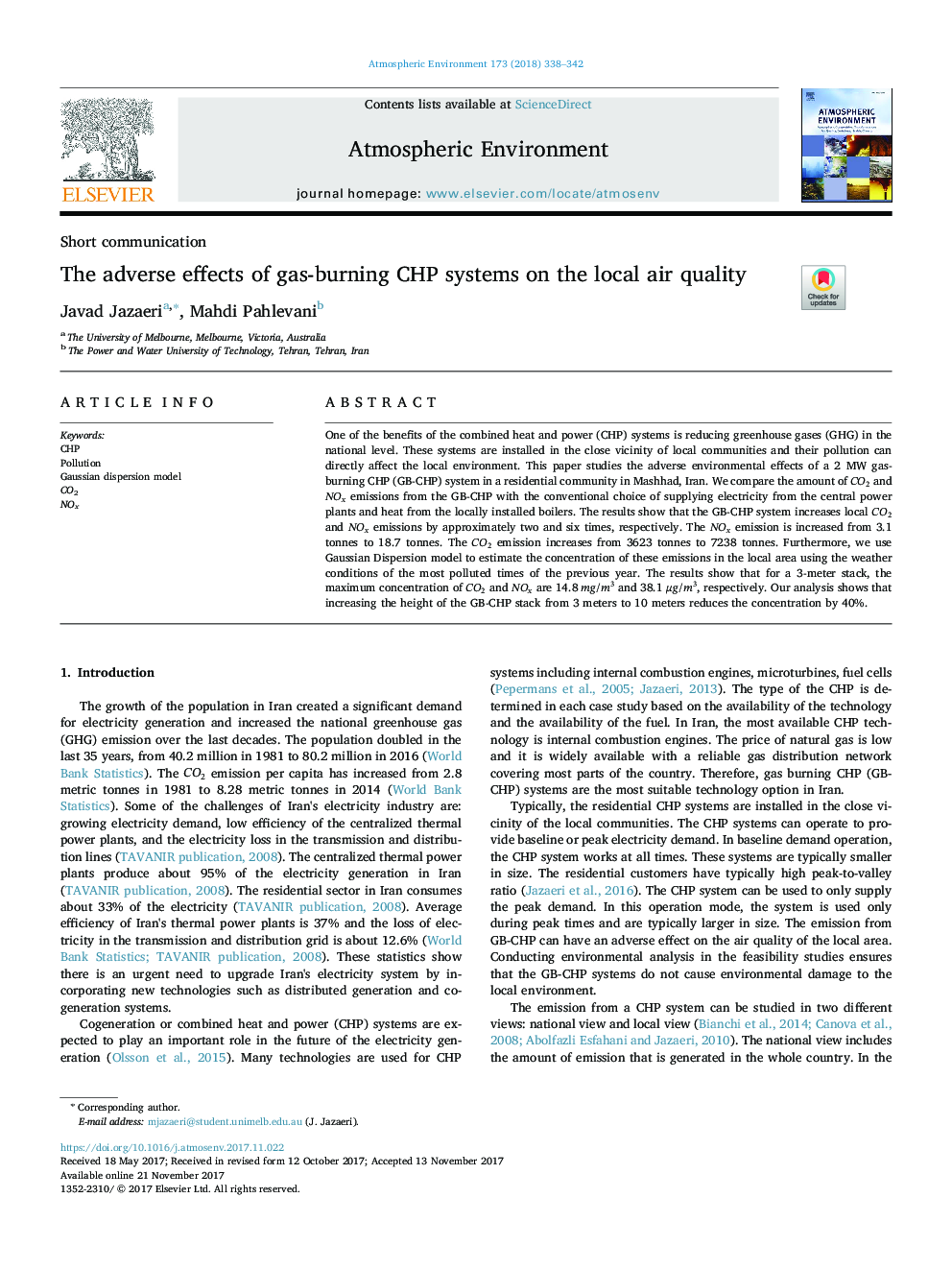| Article ID | Journal | Published Year | Pages | File Type |
|---|---|---|---|---|
| 8864321 | Atmospheric Environment | 2018 | 5 Pages |
Abstract
One of the benefits of the combined heat and power (CHP) systems is reducing greenhouse gases (GHG) in the national level. These systems are installed in the close vicinity of local communities and their pollution can directly affect the local environment. This paper studies the adverse environmental effects of a 2 MW gas-burning CHP (GB-CHP) system in a residential community in Mashhad, Iran. We compare the amount of CO2 and NOx emissions from the GB-CHP with the conventional choice of supplying electricity from the central power plants and heat from the locally installed boilers. The results show that the GB-CHP system increases local CO2 and NOx emissions by approximately two and six times, respectively. The NOx emission is increased from 3.1 tonnes to 18.7 tonnes. The CO2 emission increases from 3623 tonnes to 7238 tonnes. Furthermore, we use Gaussian Dispersion model to estimate the concentration of these emissions in the local area using the weather conditions of the most polluted times of the previous year. The results show that for a 3-meter stack, the maximum concentration of CO2 and NOx are 14.8 mg/m3 and 38.1 μg/m3, respectively. Our analysis shows that increasing the height of the GB-CHP stack from 3 meters to 10 meters reduces the concentration by 40%.
Related Topics
Physical Sciences and Engineering
Earth and Planetary Sciences
Atmospheric Science
Authors
Javad Jazaeri, Mahdi Pahlevani,
